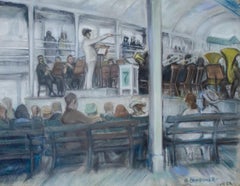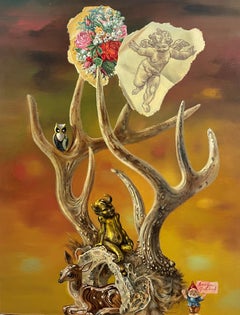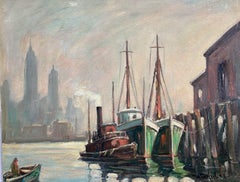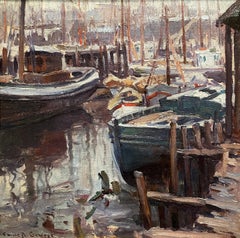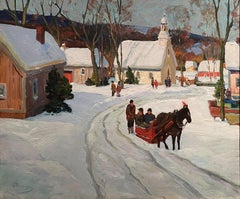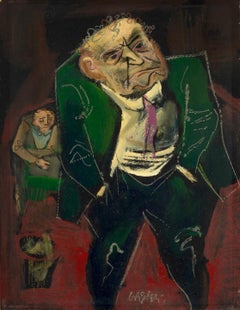Lincoln Glenn
1920s Ashcan School Figurative Paintings
Paper, Pastel
1980s Realist Animal Paintings
Oil, Board
1950s Modern Landscape Paintings
Canvas, Oil
Mid-20th Century Impressionist Landscape Paintings
Canvas, Oil
Early 20th Century American Impressionist Landscape Paintings
Canvas, Oil
Mid-20th Century American Realist Figurative Paintings
Oil, Board
1940s Surrealist Abstract Paintings
Canvas, Oil
1840s Landscape Prints
Paper, Engraving, Aquatint
1980s Black and White Photography
Silver Gelatin
1980s Black and White Photography
Silver Gelatin
1980s Black and White Photography
Silver Gelatin
1970s Abstract Abstract Paintings
Canvas, Acrylic
1960s Abstract Abstract Paintings
Canvas, Acrylic
1960s Abstract Abstract Paintings
Canvas, Acrylic
1960s Abstract Abstract Paintings
Canvas, Acrylic
1960s Abstract Abstract Paintings
Canvas, Acrylic
1970s Abstract Abstract Paintings
Canvas, Acrylic
1910s American Modern Figurative Drawings and Watercolors
Paper, Watercolor
Early 1900s Hudson River School Landscape Paintings
Canvas, Oil
1950s Abstract Expressionist Mixed Media
Paper
1880s Impressionist Landscape Drawings and Watercolors
Paper, Watercolor
1870s Hudson River School Landscape Paintings
Oil, Panel
1960s Modern Figurative Drawings and Watercolors
Paper, Watercolor
1920s Abstract Abstract Paintings
Canvas, Oil
1910s Impressionist Landscape Paintings
Canvas, Oil
Early 1900s American Modern Landscape Drawings and Watercolors
Paper, Watercolor
1950s Modern Landscape Drawings and Watercolors
Paper, Charcoal
1940s American Impressionist Landscape Paintings
Oil, Board
1940s American Impressionist Landscape Paintings
Oil, Board
1940s American Impressionist Landscape Paintings
Oil, Board
1940s American Impressionist Landscape Paintings
Oil, Board
1940s American Impressionist Landscape Paintings
Oil, Board
Early 2000s Contemporary Abstract Drawings and Watercolors
Paper, Watercolor
Early 2000s Contemporary Abstract Drawings and Watercolors
Paper, Watercolor
Early 20th Century Fauvist Figurative Drawings and Watercolors
Paper, Pencil
1960s Post-War Abstract Paintings
Canvas, Acrylic
1940s American Realist Landscape Paintings
Canvas, Oil
1960s Abstract Geometric Abstract Paintings
Canvas, Acrylic
1970s Realist Landscape Paintings
Oil, Board
Late 19th Century Impressionist Landscape Paintings
Canvas, Oil
1870s American Impressionist Still-life Paintings
Oil, Board
1950s Abstract Abstract Sculptures
Steel
Early 2000s Contemporary Abstract Paintings
Canvas, Oil
1930s American Realist Landscape Paintings
Canvas, Oil
1960s Figurative Sculptures
Wire
1960s Figurative Sculptures
Wire
Early 20th Century Impressionist Landscape Paintings
Canvas, Oil
Early 1900s American Impressionist Landscape Paintings
Oil, Board
1980s Abstract Geometric Abstract Paintings
Canvas, Burlap, Mixed Media, Acrylic
1860s Realist Figurative Paintings
Canvas, Oil
Late 19th Century Landscape Paintings
Paper, Watercolor
1950s Cubist Still-life Paintings
Oil, Board
1930s American Realist Landscape Paintings
Canvas, Oil
1930s American Realist Landscape Paintings
Canvas, Oil
1860s Figurative Paintings
Canvas, Oil
1910s American Impressionist Landscape Paintings
Oil, Wood Panel
1920s American Modern Landscape Paintings
Canvas, Oil
1980s Street Art Figurative Paintings
Paper, Ink, Watercolor
1970s Color-Field Abstract Paintings
Canvas, Tape, Acrylic
1990s Contemporary Landscape Paintings
Oil Pastel, Acrylic, Board, Pencil
